For years we’ve had discussions on discovering ways to build websites that are as close to perfect as possible. Now with the growth-driven design methodology, we have the opportunity to build a website that is above and beyond our initial expectations.
Our inbound marketing agency started off as a web design shop so it was very common for us to build a website and let it go. Like putting an anchor in the grid (web), we would launch a site, let time go by, and hope the website would perform. During the build we would apply all our skills, knowledge, experience, and “best practices” so that we could launch a site we were proud of, and that the client was happy with. Existing website clients would come back after a couple years requesting website updates, or website improvements, which at times would turn into complete website redesigns. This was the cycle we would fall into; website redesign, spend a couple months on production, throw a new anchor on the grid and wait a couple years for clients to come back for improvements.
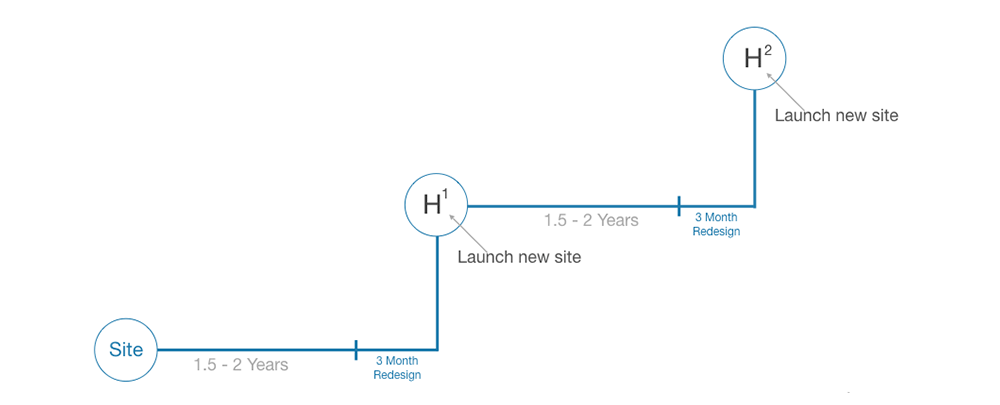
When a client did come back for website improvements, these requests could be great ones or horrible ones. Is the website request a “want” from the client or is it a need for the online visitor? Above all, how will this website request improve the user’s experience and the client’s bottom line? Yes, we had data to finalize website decisions but at the end, all website requests were assumptions and it wasn’t clear if these updates would help the organization’s goals. Growth-Driven Design changes all this.
Inbound marketing tips and real inbound stories. Delivered biweekly.
Join our community of results driven marketers.
Quick Breakdown on Growth-Driven Design
The objective of Growth-Driven Design is to build a launch pad website in 30-45 days, launch it and test it. Before that initial build, the discussion starts off with understanding the company goals and target personas, and it ends with a website wishlist. At the beginning you’ll have a long list of must-haves and nice to have website requests. The game plan would be to filter out the list with must-haves that would pack a punch and deliver results. The thought process would be, “What are the 20% of list items that will make 80% of the business impact?”. Keep in mind that the 30-45 days benchmark for a website launch can vary depending on the size on the website.
Now with the Launch Pad website complete we can focus on the remaining wishlist items and add to this list based on the data we collect. These items are broken down into high, medium and low impacts.
On a monthly basis the selected list item is tested and goes through a Plan, Develop, Learn and Transfer (PDLT) process. In order to understand if this list item was successful or not, a focused-metric is used to measure the outcome. For example, a focused-metric could be a percentage of increase of email signups.
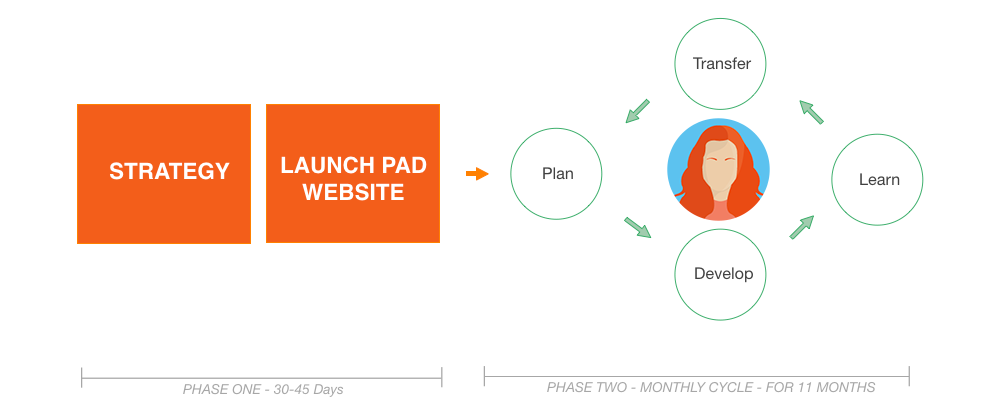
Let’s Take A Look At The PDLT Process In Action
As an example, I’ll use a website we recently launched for a YMCA. Here’s an example of how this PDLT process starts:
After our initial website launch, we ran into some user experience (UX) issues. Here are a few that just have to do with one feature, the search bar:
1.) Online visitors would type in a class they were looking for in the search bar. The search bar would immediately display a dropdown of suggested links but the visitor’s action was to press enter instead of clicking the suggested links. By pressing enter key, the user was redirected to page that was displaying results that weren’t what the member was looking for.
2.) People would search for events, branch information, and even staff members using the search bar. At the point of launch, the search bar only searched for programs and classes, so a good amount of people would come up with no results.
Tools Used to Discover These User Experience Issues
We used two recording tools, UsabilityTools and Hotjar. I do like how UsabilityTools shares where the user came to site (Organic, PPC, Social, etc.) when a session in being recorded. On the other hand, Hotjar has several features I enjoy such as, block recording from certain IPs and filter your recording sessions. And for some strange reason I really appreciate how the country’s flags are displayed for each recording. We focused on the recordings that had accessed a lot of pages, because usually those were the people who were a tad frustrated. We could easily see what they were trying to access, and came up with a plan to fix it.
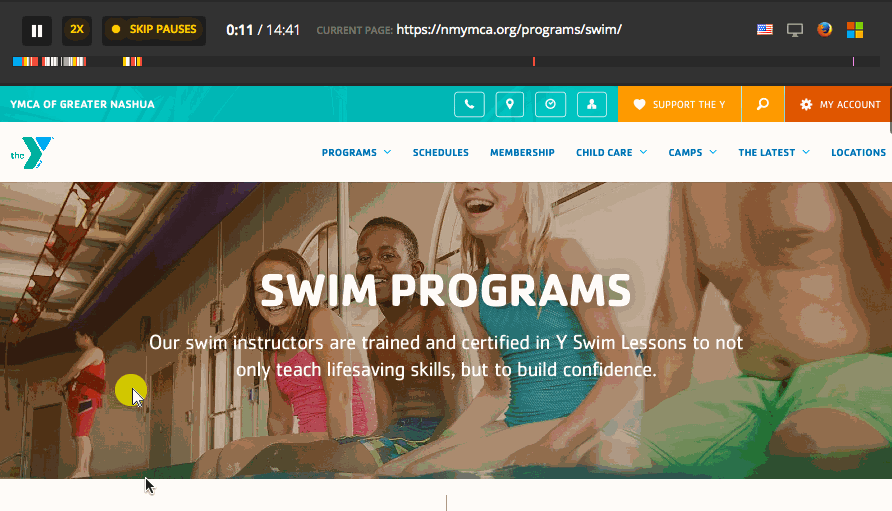
For heatmaps, click maps and scroll maps we used Crazyegg and Hotjar. It was interesting to discover how users were or weren’t clicking in the places we had assumed they wouldn’t or would. Everyone’s comfort level with computers and the internet is different, and this particular client had a wide range of users. Seeing these maps meant we could learn that quickly.
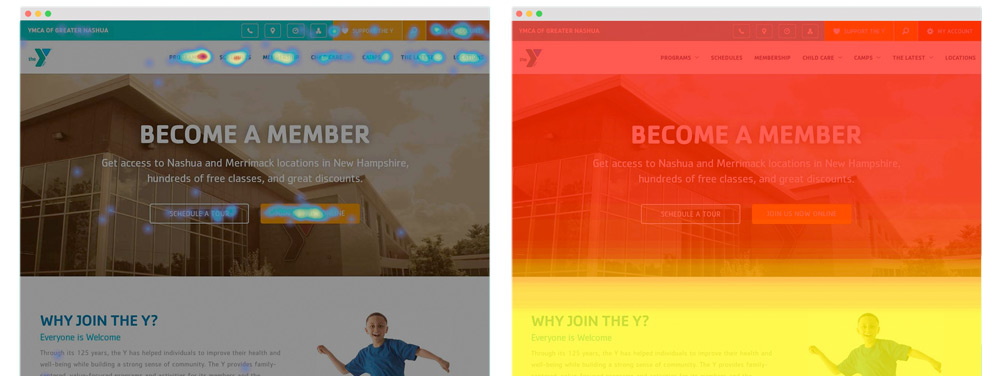
Last, we brought in Hubspot’s Leadin to understand in depth what a buyer’s journey was looking like. We took advantage of the chronological history of a converted lead and started to understand specific interests a visitor had on the website. By looking at the search results pages, we could see what was searched for. Now we had an idea of the things the users want to access with this search bar.
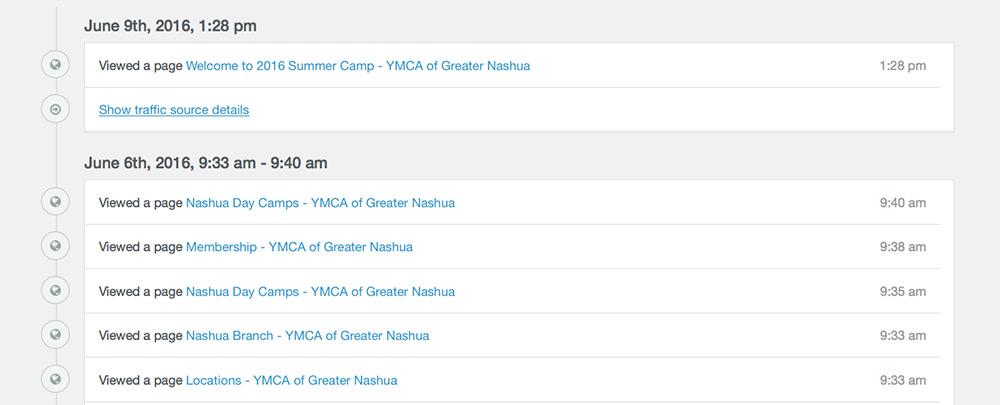
After we gathered this info, we created a hypothesis:
For [Gym Member George] visiting the [Home page], we believe improving [the search feature] in the [Main Menu] will [increase gym class online sign ups by 10%].
The changes we made
First, we created a results page for those users that hit enter after a search. This seemed like such a no-brainer after the fact, but no one ever ran into this issue before launch.
Then, we updated the 404 page. Instead of just being a generic page, we inserted a message telling them there weren’t any results, and coupled it with another search bar so they could try again.

Last, we expanded the search function to include the entire website, rather than just programs and classes. This meant more options for searches, and less frustration for users.
The Outcome After using Growth-Driven Design Techniques
The first thing we noticed was a lot less phone calls from Y members, which meant almost no phone calls from our client to our agency. The initial storm was over, and people were getting the hang of the new site. The search bar was a huge part of that. So many users were used to the old (outdated) layout, they didn’t want to even try navigating the new one. So they used the search bar instead.
The website went live on a Friday. Keep in mind the website is used by several main personas; prospective members, current members and staff. We had to make sure the new website was a smooth transition for everyone. Of course it wasn’t completely seamless, but since we had our tools in place, we were able to stop the bleeding in less than a day. By Monday, everything was pretty quiet and website requests weren’t coming in. We found this odd and by the afternoon we had to call in just to make sure that everything was running smooth and sure enough it was. Mission accomplished.
With Growth-Driven Design, a website is constantly evolving. The website is built around the user rather than the organization’s wants or web trends. The guessing game goes out the window. This all makes a lot of sense simply because as time goes by, technology changes, and quickly. As technology changes, so does human behavior and as human behavior changes, so will how people use websites.

